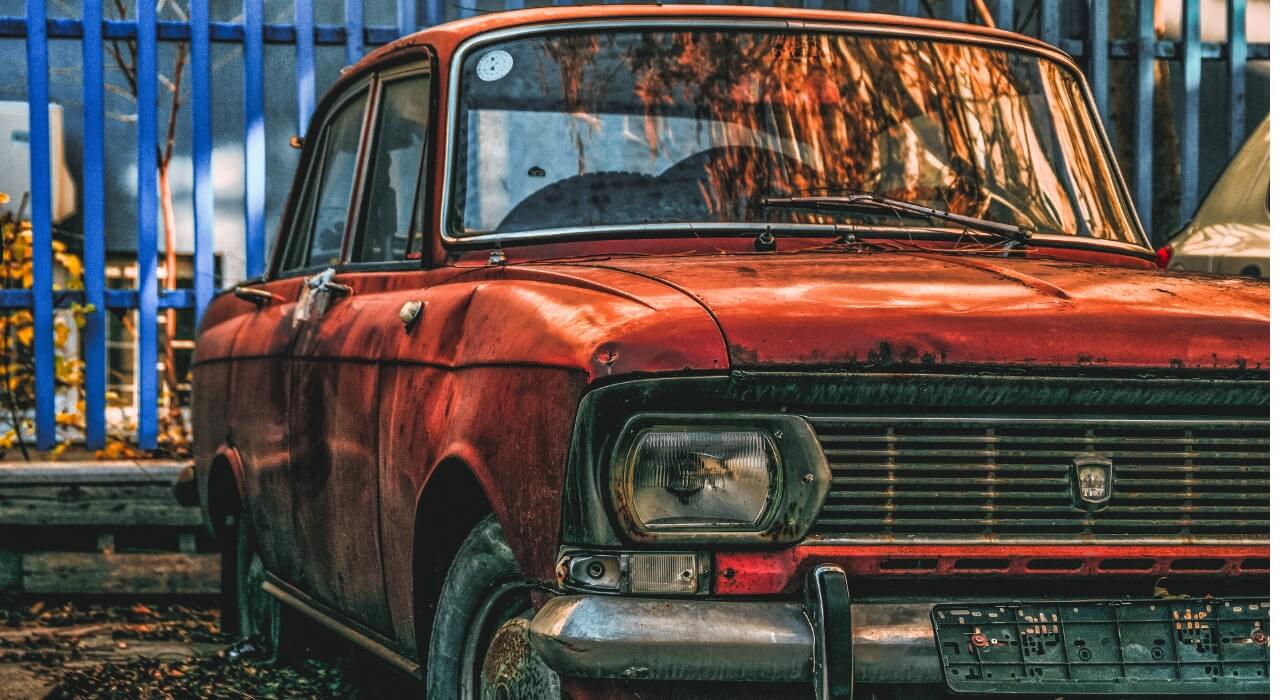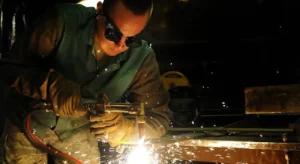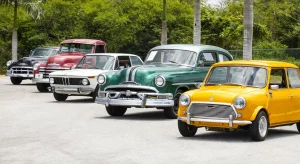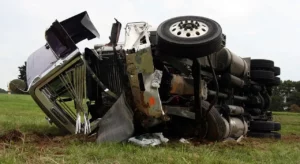Are you wondering how to stop rust on car frame? Has your car started accumulating rust, and you don’t know what to do? If yes, then you have come to the right place.
Getting rust on your vehicle is a serious issue that you should not avoid. Rust not only diminishes the look of your car but also lowers its market value.
In simpler words, rust is a silent car killer, which, if not treated on time, can cause major issues in your ride and ultimately make it unfit to use.
By not taking proper care of your ride, you are setting it up for failure. Actions like continuously exposing it to rainwater, no adequate cleaning & maintenance routine, and no professional outlook are prime reasons for rust formation.
But the good news is that this whole scenario can be prevented. You can not only prevent your car from rusting but also eliminate any rust formation on your car.
To help you get started, we bring you this easy beginner-friendly guide. Here we have discussed types of rust, causes of rust formation, how to stop getting rust on the car frames, and more. So, let us get started and help you take better care of your ride.
What Is Rust?
We need to understand the basics before learning how much frame rust is too much. Rust is the combination of oxygen and iron, mainly known as “Iron Oxide.”
It is formed as the result of the chemical reaction when iron or any material that contains iron, like steel, is exposed to water & air for a prolonged period.
First, the moisture on the iron surface mixes with the carbon dioxide in the air to create a weak acid that begins to dissolve the iron.
At the same time, the remaining water component is also getting broken down into hydrogen and oxygen elements. And out of these two separate elements, the oxygen atoms combine with the iron atoms and form iron oxide.
Iron oxide is red in color. It seems like the red dust is standing on your car’s surface. It is why rust is also referred to as “Red Dust.”
Types Of Rust
Rust is deadly for your vehicle. But it does not automatically go to the stage where it is impossible to recover your car. Rust on vehicles happens in stages. It means if you do not take care of the problem when it begins, it will continue to progress and do more damage.
But how to tell if the rust formation on your ride is just the beginning or if it is way past the phase that you can handle? All this confusion can be resolved if you know the different types of rust formations.
Here we have all types of rust that can form on an automobile. Let us check them out:
– Surface Rust
You will encounter a surface whenever your car’s paint breaks down. Vehicle paint breakdown generally happens with prolonged exposure to the sun’s harmful UV rays or due to mechanical damages like dents, scratches, or scrapes.
The paint breakdown exposes the metal surface to air, leading to rust formation over time. The good thing is that surface rust is only the beginning and can be easily removed.
You can use an abrasive wheel or high-grade sandpaper to grind it down until the rust from the affected area is gone, and the shiny metal beneath is exposed. After this, with the help of a car polisher, you need to prime the area and apply new paint.
– Scale Rust or Bubble Rust
When the surface rust is left untreated, it often forms scales, also known as bubbles. This situation arises when the surface rust expands and flakes, exposing the metal surface underneath.
At this rust stage, the metal begins to corrode, and the rust continues to go deeper and thus creating scales. This intermediate rusting state can be treated by adequately grinding the rust from the infected area.
However, in this stage, you will require more strength and even a handy tool like a wire brush to go deep into the rough scales before the grinding.
– Penetrating Rust or Corrosion
If you leave the scale or bubble rust untreated for a long time, the metal will weaken more, and the rust will leave holes in your car. This is the most brutal rust stage, and you have few options to fix this problem.
In maximum cases, you will require to replace or cut out the area affected by the rust and have patch panels welded in its place.
Suggestion: The Best Self-Driving Cars To Step Into The Future: Everything You Need To Know.
And corrosion is an even bigger problem if it is on the frame of your car. The structural integrity of your vehicle gets compromised, making it unsafe for you to drive. So, answers to questions like how to remove rust from car frames are complex.
What Are The Main Causes Of Rust On A Car?
Iron is a vital element that is hard to break by external force. But it becomes the weakest due to its own rust. There are several reasons why rust formation begins on an iron surface.
It is prevalent in automobiles, especially the ones that are not taken good care of. Car owners often claim to follow a good maintenance routine but still find their ride with rust budding in various parts.
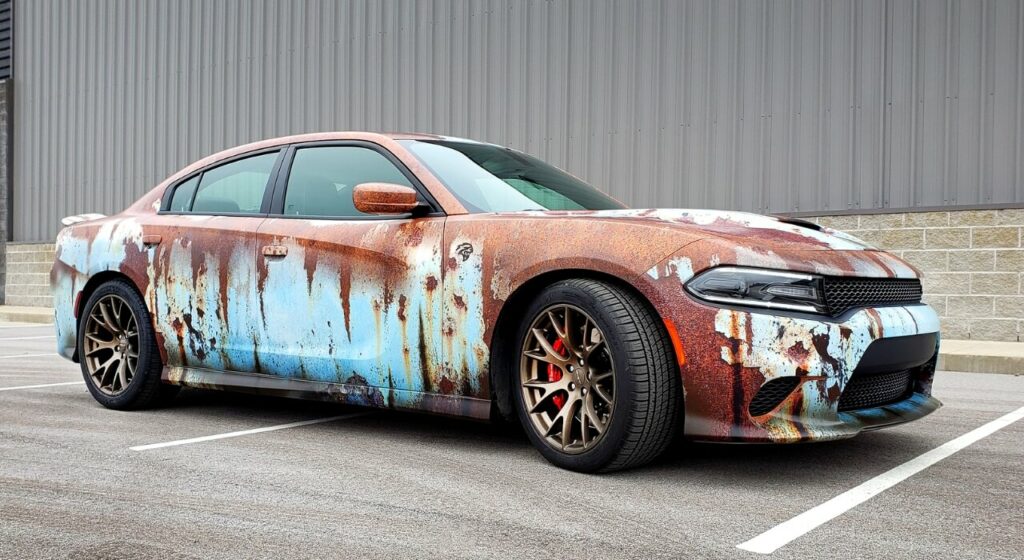
If you are among such car owners, then before exploring how to fix rust on a car frame, you need to learn what is causing it in the first place. Many factors are at play for an automobile to catch rust. Here we have listed the most common ones for you:
A. Climate
The biggest culprit for your car getting rust is the climate. Your vehicle gets regularly exposed to rain, snow, hail, and sleet. This frequent exposure increases the chances of moisture sitting on different areas of the car and oxidizing with the present metals.
B. Salt
Vehicles are the mode of commute. And thus, they get exposed to road salt numerous times a day. Road salt is usually laid on the road to lower the freezing point of water. But it can harm your car components by rusting them.
The salt acts as an electrolyte. It permits the iron components of your ride to lose electrons quickly, thus causing rust formation. This high exposure to road salt is generally restricted to the surface beneath your car.
C. Car Age
The paintwork and protective coating on your ride degrade with time. If this degradation is not appropriately maintained, the metalwork beneath gets in contact with the moisture, leading to rust formation after prolonged exposure. Also, the older the car or its paint job, the more it is prone to rusting.
Related: Quick Access and Secure Storage: The Top 7 Magnetic Gun Mounts to Equip in Your Car.
D. Car Material
The materials used in building a car play a massive role in rusting. Earlier, cars were usually made without non-reactive coatings. This made them more vulnerable to rusting.
But this is not the case with most modern cars that come with those non-reactive coatings that ensure that no such thing happens to a great extent.
E. Driving Style
How and where you drive your vehicle also decides the rusting chances of your car. If you drive primarily off-road and on muddy terrains, your ride has more risk of catching rust, even with proper maintenance.
F. Negligence
One of the most common reasons most people get rust on their cars, even on the new ones, is their absolute negligence towards them. You must maintain your ride correctly to ensure its good health.
What Are The Most Common Rust Locations In A Car?
Rust formation can take place in any part of your car. However, a few locations are more prone to it than others. Many car owners think that the surface of their ride is what gets exposed, and thus it is the only place to get rust. But it is not always true. Often, the rust begins inside part of your car & makes the way outward.
Don’t Miss To Checkout: Discover the Top 7 Best Tires for Your Lexus RX350: Enhance Performance and Safety.
So, if you see surface rust in your car and get rid of it, do not be happy so soon. Check beneath the surface and ensure there is no rust buildup inside the body of your car.
Thus, before searching for how to stop rust on a Jeep frame or any other ride you own, learn about the most common areas to inspect.
1. Frame Rails
The frame rails run underneath both sides of your vehicle under both doors. These are generally made of steel channel sections.
2. Exhausts
The tailpipe of your ride is exposed to moisture all the time from the inside out. Thus checking it regularly will let you know the rust status.
3. Wheel Walls
These are curves above your tires. They are also highly prone to rust, especially in older cars that do not come with arch liners.
Also Read: Protect Your Car’s Windshield: Discover the 7 Best Products for Removing and Preventing Scratches.
4. Suspension
The suspension of your ride is highly prone to get in contact with moisture as it is close to the tires, which flick up dirt and all kinds of debris.
Most people ignore the lower surface of the car, which has a higher chance of rust formation. So check the suspension every time you clean your ride, as it hits your car frame the most.
5. Windscreen
The areas around your car windshield are prone to leaking and can expose the nearby area to moisture. The leakage is so negligible that most of us can not spot it. And with time, it leads to rust. So, always check your windscreen for any leak, mainly on the sides.
6. Boot Floor
We all have car floor covers inside our cars to make the interior look more classy and comfortable. But this cover sometimes keeps us from learning what goes beneath the surface. So, make sure to pull up those carpets every now & then and look for any signs of rusting.
Similar Post: Enhance Off-Roading Performance with These 9 Exceptional Shocks for Jeep Wrangler.
7. Car Doors
Doors tend to capture the water at their edges, especially when it’s raining and you take time to close them. So, always check them inside & out during every rust inspection.
How To Spot Rust On Your Car & How To Stop Rust On A Truck Frame?
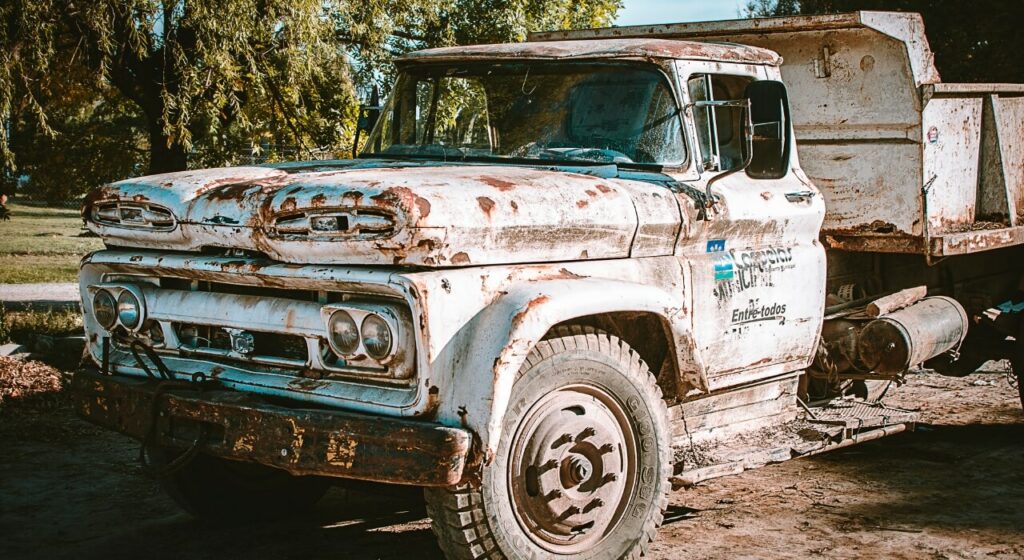
Now that you know the different causes that form rust on your car and the most common regions that get it, it is time we move to the next step.
There must be more than knowing how and where to find rust in an automobile. As a car owner, you need to be keen and quick to deduce if there is rust formation on your ride.
Do not worry. You do not need professional assistance to spot rust on your ride. There are a few easy ways to deduce if your car is aging or rust has gotten to it.
A. Bubbles On The Surface
If you find bubbles under your car paint, it indicates that the water and air have gathered under it, forming a barrier between the car paint and the car body. This is a sign that the area will soon get covered in rust if you do not fix the issue.
Suggestion: Maximize Space and Convenience: Our Picks for the Best Hatchback Bike Racks.
B. Body Damage
Examine your ride weekly for any dents, swirls, and scratches. Their occurrence damages the paint job, which makes the perfect passage for moisture to come in contact with the metal underneath. If left unattended, those dents and nicks can lead to rust.
C. Puddles On The Inside
If you find dampness on the boot or footwells on your ride, it is usually a sign that the metal underneath is rusted. It can no longer keep things like water outside. You need professional assistance as soon as possible.
D. Irregular Paint Job
If the paint job on your car surface is not regular & does not match the original in some places, this indicates that rust is forming in that area. You need to properly clean & seal that area before painting so the issue does not return.
13 Easy Ways On How To Stop Rust On Car Frame – Stop Getting Rust On The Car
If you have reached this far in the article, we assume you are now aware of how dangerous rust can be for your automobile. Rust is a silent killer that will degrade your ride and leave you with nothing but a loss on your part. It not only kills the look of your vehicle but also devalues it.
But the good thing is that you can prevent and stop rust formation on your ride. All you need to do is follow some crucial car care steps. Here we have listed 13 easy ways to help you take better care of your ride.
Following these steps religiously will ensure there is no rust buildup, and if there is a buildup, it will help you stop it for good.
1. Frequent Car Wash
The foremost thing that should not be a big hassle for any car owner is cleaning or washing your car often. Your ride goes through a lot when it is out on the road. It is covered with all kinds of dirt & debris, which is not always visible to the eyes.
You must keep those contaminations from sitting on your car surface long. The longer you will take to clean your car, the more chances there are for rust buildup, as some damage is already done.
So, wash your ride frequently. Do not wait for it to look dirty to do the task. If you wait too long. There are several car wash methods, all of which are good to use, but high-pressure cleaning is the most effective.
2. Do Not Forget To Dry
Many car owners take good care of their rides by washing them regularly. But even after that, they find rust issues in them.
It is because they think that with washing, the job is done. One of the biggest mistakes many car owners make is that they only wash the car and not dry it.
Related: Upgrade Your Ride: Explore the 8 Best Car Seat Covers for Style and Comfort.
Even after washing, there is water on the surface that can sit there for a long time and can do harm. So, after proper cleaning, use a microfiber towel to dry the area so that no moisture is left on the surface.
3. Wax The Surface
Waxing the surface of your car is another excellent way to ensure its exterior is all clean and safe. Waxing adds another layer of protection, ensuring no moisture stays on and causes any damage.
Car waxing should be done at least twice a year. But if you keep your ride outdoors often, you might need to follow the process more times.
You can wax your ride at home with several car wax products available. There are spray wax, paste wax, and exclusive car wax for red cars and any other color. But if it is a hassle, you can always seek professional assistance.
4. Apply Rust Coating
If you live somewhere with harsh weather conditions, the best thing you can do for your ride is to apply a protective rust-proof coating to its surface. This is a tricky and crucial job, so we recommend you take professional help to achieve perfection.
Exposure to road salt is one of the primary reasons for rust formation. So, if you have rust coating in areas frequently exposed to salt, rust coating can be an absolute game changer. If your car is expensive or you wish to keep your ride long, this is a must-step.
5. Park Indoors
For your vehicle’s long life, you need to protect it from the outside elements. The constant exposure to the sun, rain, snow, and other elements can hurt your car more than you can imagine.
So, try to always park your ride indoors. If you are outside, try to park it in shades. Keeping your ride in your house garage or inside parking will keep it safe from scorching UV rays, hail, heavy rain pour, and more. If you do not have a garage, you can purchase a portable one, an affordable option.
6. Avoid Driving In Rain
Try to avoid driving during heavy rainfall. It is because acid rain is a real thing. The components of acid rain can quickly get deposited on your car’s surface and damage it. And there are chances it can make its way to the inside of your vehicle.
But there are times when you may not avoid driving in the rain. At those times, you should wash your ride as soon as you return home. Washing your ride with a tap will remove all the harmful rain chemicals from the surface.
Don’t Miss To Checkout: Top 10 Cheapest Sports Cars To Consider: Best Affordable Sports Cars.
7. Get Yourself A Car Cover
If you do not have a house garage or money to rent a parking space or buy portable parking, you can always buy a car cover. Car covers can help you keep your ride dry during heavy snow, rainfall, and those angry winds.
They will keep your car’s surface safe from outside contaminations. But to ensure you get all the benefits, try to purchase the cover from a reputed maker.
The more durable and breathable the product is, the better it will take care of your ride. Also, a quality cover will allow the humid air to escape, eliminating the high chances of rust formation.
8. Install Mudguards
When driving, especially on a muddy road, the chances of your wheels and brakes getting exposed to contamination increase.
To avoid this, you can install mudguards on your ride. They eliminate unnecessary water contact on the bottom surface of your ride.
Driving on surfaces filled with water or mud hurts your brakes significantly. But having good quality mudguards ensure no harm is done.
9. Avoid Parking In Humid Areas
You should avoid parking your car in enclosed areas with high humidity. This is not good, especially if your vehicle already has rust formation. So, if you find your house garage has humid air, take care of it first, then park the car inside.
Also Read: Explore The Best Mazda CX 90 With Expert Review On Price, Specs, & More.
10. Plan Your Driving Route Beforehand
You should always plan your route before you take your ride out, especially during the rainy season. Avoid the roads that are most likely to be flooded with water. And if the situation is worse, you can always opt for a taxi service.
11. Clean The Drains
All the vehicles have drains around their bodywork in different locations. They are essential as they let the water run away in areas prone to rusting.
However, debris can sometimes enter these drain holes and block them up. The water sitting inside your car for a long time will lead to rust formation.
So, check for all the drain holes in your ride and clean them to ensure there is no blockage. The bottom of car doors, tailgates, and bumpers are where the drains are usually located. But to be sure, refer to your car’s owner’s manual.
12. Wash The Underside
Pay attention to the underside of your car. The bottom of your vehicle comes in contact with all kinds of dirt and debris. If you do take care of the underside, the settled dirt & debris will lead to rust formation over time and kill the structure of your ride.
So, use underbody spray to get every last particle of grime out from the base of your ride. To ensure more safety, seal the underside with chassis rust removal spray that resists all the corrosive elements and does not let them sit on the surface.
13. Tackle The Rust Immediately
If you find any scratches, swirls, or rust formations anywhere on your ride, tackle it immediately. Do not let the ruined paint job sit there for long. If the paint job coating is damaged, apply a new one to protect the area.
And if there is rust formation, no matter how small, use your car maintenance kit to remove it. Make a habit of checking all the places of your ride with a torch after cleaning for any molding, scratches, damaged paint job, and more.
The sooner you find & handle the issue, the better. Several best tools for removing rust from frames are available in the market. With little research, you can find the best product for your usage.
How To Stop Rust On A Truck Frame?
If you have rust formation on your truck and wish to remove and simultaneously stop it, there are a few steps to help you. Removing and stopping rust formation on a truck, or any other ride, takes your time, effort, and dedication.
You can only get the best results if you know the right way to do it. Below we have a few-step guide for you to follow to remove & stop rust on the truck frame.
Similar Post: Top Choices for Easy and Effective Oil Changes: 7 Best Oil Filter Wrenches for Toyota Owners.
– Get The Necessary Items
The first thing to do before stopping the rust formation on your ride is to get all the necessary items. Having all the materials in one place will ensure the smooth running of the process and eliminate unnecessary delays.
You will need items like Wire Brush, Grinder, Rust Converter, Paint, Soap, and Safety gear. But understand that you may require other tools depending on how extensive the rust is or how thorough you want to be with the process.
– Use A Grinder or Wire Brush
Start with the process once you have all the items in one place. First, you will need to remove the rust from the frame using a grinder or wire brush.
With the help of these tools, you will be able to easily remove most of the rust. Grinding leads to the flying of rust particles. So, make sure you wear safety goggles and a mask for protection.
– Sanding The Surface
After grinding, the affected area gets clean to a great extent, but a few particles still remain on the surface. You can get rid of the remaining surface dust by using sandpaper. Take your time while using sandpaper to be thorough. Make sure that you are eliminating all the rust deposits.
– Wash The Frame
After sanding the rust away, it is time to wash the truck. Use water along with a mild cleaner. At this point, avoid using heavy cleaners as they can damage the exposed area. Washing will remove all the contaminations and reveal a cleaner surface. Remember to let the truck dry completely.
– Inspect The Surface
After all the rinsing and drying, inspect the truck’s surface for any other signs of rust formation. This is a tedious and time-consuming process. So make sure you are patient and looking carefully. If you want to be more thorough, you can repeat the cleaning & drying steps for as long as possible.
– Apply Rust Converter
When satisfied that you have removed all the rust, the next step is to apply the rust converter. The rust converter acts like a primer which turns any remaining rust into a black layer that you can cover with a layer of paint.
For the proper application of the converter, always check its usage instructions. Some must be applied with water, while others can be sprayed directly on the surface.
– Apply Paint
After you have applied the rust converter, leave the surface to dry for a few hours. Once the area is dried completely, apply a layer of paint on your truck frame. Opt for a cool & dry day to do the paint job, ensuring better application.
Top FAQs About Best Tool For Removing Rust From Frame
Can I find an undercarriage rust removal service near me?
Rust in vehicles is a common occurrence way more than you can imagine. Almost every car repair workshop in the USA offers a rust removal service.
While removing the rust from the visible regions of the ride is highly easy, it is quite the opposite for the car base.
Not everyone can independently clean and repair the damage to the car’s undercarriage. Thus, it is better to go for the service that can do the task for you.
You can easily find one near you with the help of the internet and a little bit of research.
What is the rusted chassis repair cost in the USA?
The cost of chassis repair depends on the level of damage done to the frame. The little the damage, the less you pay, and vice versa.
But on average, you can expect to pay between $600 to $4000 for chassis repair.
It can be less or more, depending on the damage level.
What are some famous myths about car rust?
Myths or urban legends are part of our lives. But the fantastic thing is that they are not limited to old cultures and rulers.
As a new car owner, you will encounter many car-related myths that do not make sense.
Here we have listed some such urban legends that you should just ignore.
- Annual Rust Coating
Rust-proofing your ride is great, but one should not overdo it. If you have a qualified professional do the rust coating on your ride, it should last for years before you need another one.
You can not rust proof after the rust formation
Another myth is that if you find rust on your car surface, you can not rust-proof it.
Sure rust proofing can not undo the rust, but it can significantly slow down the process.
Also, the coating ensures the other parts of your car are not affected by the rust formed in one area.
- Frequent Washing Can Cause Rust
You washing your ride daily will not cause it to rust. Coming in contact with water frequently can cause rust, but cleaning is a different process.
Cleaning your ride helps you get rid of all the contaminations. It is one of the best ways to prevent rust.
All you need to take care of is that you dry your car correctly.
- Rust On the Body Is The Only Issue
Many people believe the rust on the car’s surface is the only concern. They do not think about other areas.
The rust on the car’s surface is nothing compared to the rust on the undercarriage of your ride.
The undercarriage has more chances of getting contaminations stuck to it, leading to rust formation and severe damage.
So, it is crucial that you inspect the car surface clearly but do not forget your ride’s underside.
How to prevent rust on truck frames?
If you wish to prevent rust on the frame of your truck, there are a few things that you should follow strictly.
- Firstly, make sure you regularly inspect your ride for rust formation.
- Secondly, wash your truck frequently and pat it dry with no moisture or dampness in any area.
- Thirdly, use protective coatings like car wax, rust resistants, and more to have a protective layer around your ride.
- Fourthly, examine the paint job to see if there is any damage. Keeping track of the paint job will quickly alert you about different signs of rust formation.
- Lastly, ensure you keep your ride safe from extreme exposure to the outside elements like snow, excessive sun rays, rainfall, & more.
Does rain make rust worse in vehicles?
YES. Rain is known to make rust. Most car components are made from steel, an alloy of iron and carbon.
So prolonged exposure to water or moisture leads to oxidation, and thus rust is formed.
How long does it take for rust to form on a vehicle?
The car’s surface is made of steel. If it is exposed to rainwater and salt daily, rust formation can start as early as three to four days.
So, it is your responsibility as a car owner to ensure the safety of your ride if you want to get your money’s worth and keep your ride for a long time.
Conclusion
Rust can hurt your car more than you can anticipate. It gets even worse if it strikes the frame or structure of your ride. If you wish to keep your ride for a long time and enjoy driving it, you must learn how to stop rust on car frame, prevent rust, and remove rust from your car.
This beginner-friendly guide will tell you everything you need to know about car rust and how to handle it in the best possible way.

